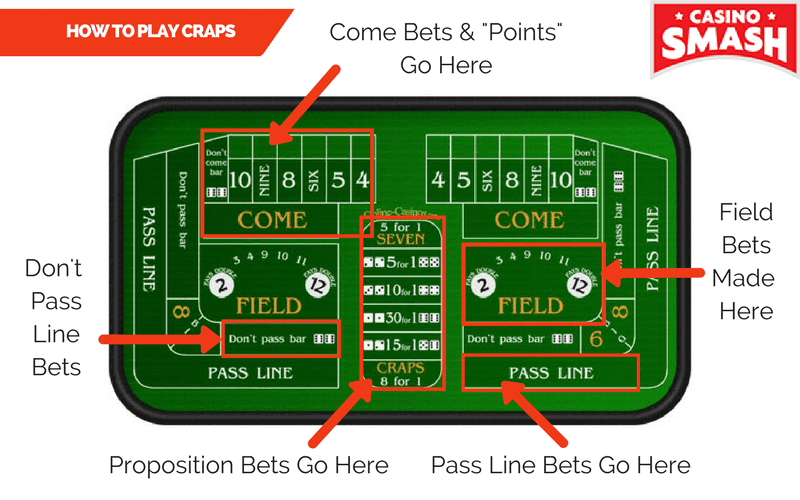Craps is an exciting and popular casino game that involves a unique table layout. Understanding the craps table layout is essential for players who want to participate in this thrilling dice game. In this article, we will explore the various elements of a craps table and how they contribute to the overall gameplay experience.
The Basics of a Craps Table
A standard craps table usually has a green felt surface and is divided into three main sections: two identical side sections and a center section. The side sections are symmetrical and mirror each other, which allows for efficient play with multiple players. The center section includes various betting options and is where the dice are thrown.
The Pass Line and Don’t Pass Line
The pass line and don’t pass line are two fundamental areas of a craps table layout. The pass line is the most common bet among players and is placed in the side section of the table. This bet wins if the first roll, known as the “come-out roll,” results in a 7 or 11. On the other hand, the don’t pass line bet wins if the come-out roll is a 2, 3, or 12. These two bets form the core of craps gameplay.
The Come and Don’t Come Bets
Adjacent to the pass line and don’t pass line are the come and don’t come betting areas. These bets are similar to the pass line and don’t pass line bets but are made after the come-out roll. Players can place their bets on these areas, hoping for subsequent rolls of 7 or 11 for the come bet and 2, 3, or 12 for the don’t come bet to win.
The Field Bet
Located in the center section of the craps table layout, the field bet offers various betting possibilities. It contains numbers 2, 3, 4, 9, 10, 11, and 12. Players can place their chips on any of these numbers, and if the next roll matches one of the selected numbers, the bet wins. The field bet provides quick and easy betting opportunities for players who prefer a more straightforward approach to the game.
The Place Bets
The place bets section on a craps table layout allows players to bet on specific numbers to be rolled before a 7. Commonly placed numbers include 4, 5, 6, 8, 9, and 10. The payout odds vary depending on the selected number, offering potentially higher payouts for riskier bets. Place bets are a popular option for players looking for more strategic betting opportunities.
The Big 6 and Big 8 Bets
The big 6 and big 8 bets are located in the side sections of the craps table layout. These bets win if the chosen number (6 or 8) is rolled before a 7. While these bets provide a higher chance of winning compared to place bets on the same numbers, they offer lower payouts. The big 6 and big 8 bets are often preferred by newcomers to craps.
Other Betting Options
In addition to the aforementioned bets, a craps table layout also includes areas for proposition bets, hardways bets, and one-roll bets. These bets are more specific in nature and offer different odds and payout rates. However, they are generally considered riskier, as they require particular combinations of dice rolls to win. These additional betting options provide experienced players with more diverse strategies to explore.
Conclusion
Understanding the layout of a craps table is crucial for anyone looking to partake in this thrilling casino game. By familiarizing yourself with the different sections and betting options, you can fully immerse yourself in the excitement of craps. Remember to approach the game responsibly and always gamble within your means. Good luck at the craps table!
Disclaimer: Gambling should be done responsibly and in moderation. Please gamble responsibly and seek help if you believe you have a gambling problem.
